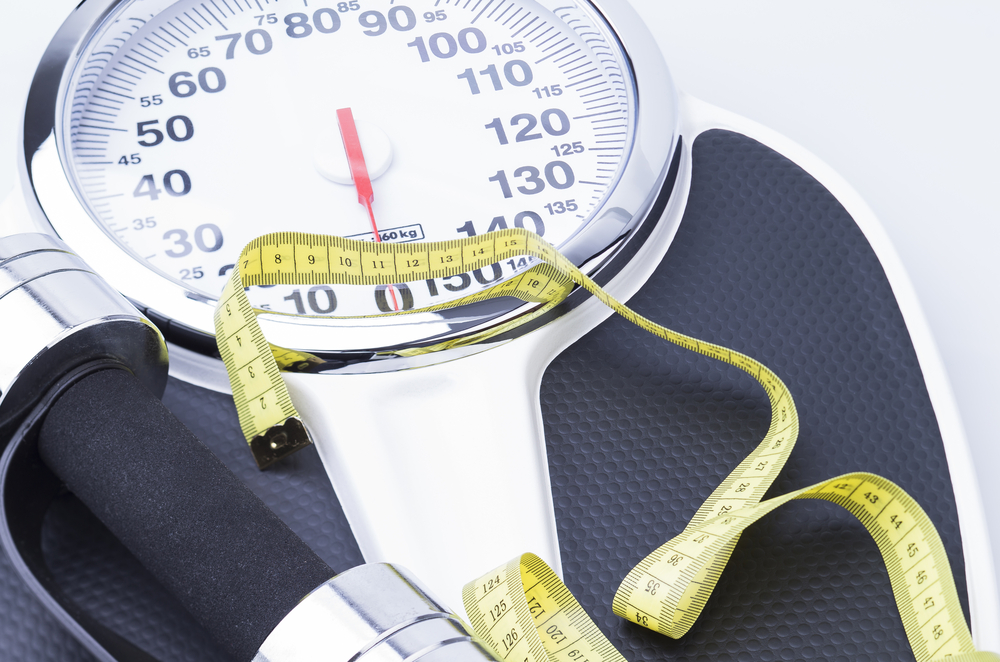HOW TO TRACK PROGRESS DURING A BULKING PHASE
What’s the best way you can track progress while bulking?
In this article you’ll learn exactly how to monitor your progress step by step to maximize your muscle building results.
Some lifters – especially those blessed with above average genetics – can often do fine by simply eyeballing the scale and mirror without specifically tracking anything on paper.
But for the majority of lifters out there, a more detailed progress tracking approach is important to ensure that you’re building muscle at an optimal rate, while also minimizing excessive fat gain.
How To Track Progress While Bulking
Progress Tracking Method #1: Body Weight

There are various metrics which you can use to track progress while bulking, but the two most important ones are:
- Changes in body weight
- Changes in strength
The bottom line is that if your weight on the scale and your strength in the gym are both consistently increasing at an appropriate pace, then you can be almost certain that your program is on the right track.
On the other hand, if your body weight is going up or down too quickly, or your strength numbers in the gym are stagnant, then you’ll know that something in your programming is off and needs to be adjusted.
Expected Weight Gain Per Week As A Beginner
The expected rate of weight gain for a beginner during their first year of lifting would be approximately half a pound per week, or 2 pounds per month.
To make sure body fat isn’t being accumulated at too quick a pace, 3 pounds should be considered as the maximum upper limit.
From there, these figures should generally decrease by about 50% for every year of consistent training after that.
Keep in mind that these are just estimates, as each person’s rate of weight gain will differ depending on various factors such as genetics, program adherence and program quality.
You can just use them as approximate ballpark figures to get a general idea as to how much weight gain you should be aiming for per week and per month.
Tracking Weight Gain Accurately

To track progress while bulking properly, you’ll want to:
- Weigh yourself on a digital scale first thing in the morning before eating and after using the washroom. This will keep your readings as consistent as possible from day to day.
- Compare your average weight for the week to your average weight for the previous week. This is important to do because your weight can fluctuate quite a bit between any two individual days. You don’t necessarily have to weigh yourself every single day, but ideally you should aim for at least once every two to three days.
Half a pound per week is obviously a small amount, and these numbers will get even smaller after the second year of lifting.
For that reason, you shouldn’t be expecting to hit these weight gain targets with 100% accuracy. Instead, just use them as a general estimate to make sure you’re not gaining weight too quickly or slowly.
If you’re gaining weight too slowly (or if your weight is completely stagnant altogether) then this means that you’re not in a sufficient calorie surplus to facilitate muscle growth. In this case, your calorie intake will need to be increased.
It is possible to gain some muscle while eating at maintenance calories, or even in a calorie deficit if you’re a beginner. However, if you’re in a focused bulking phase and your goal is to maximize muscle growth in the most effective way possible, then a calorie surplus will be a requirement.
To bulk effectively, you need to be consuming more calories than you burn daily.
If your bodyweight has plateaued for a consistent 1-2 week period, you’ll want to add in about 150 calories to your daily intake in order to get things moving again.
If your weight begins steadily increasing then you can remain at that intake for the time being.
If your weight is still stagnant, add in another 150 calories. Repeat this process until you’re gaining weight within the appropriate weekly and monthly target.
On the other hand, if your body weight is going up too quickly, this means your overall calorie surplus is too large. In this case, you need to do the opposite by bringing your calories down until your rate of weight gain slows to an appropriate level.
Always remember that muscle growth is a slow, gradual process.
Your body can only build a limited amount of muscle from week to week. So you must stay patient and aim for quality lean gains over time rather than trying to rush the process.
Keep in mind that every 1-2 pounds of fat you gain during a bulking phase equates to about a week’s worth of cutting you’ll need to do later on.
So, your future self will thank you for taking things slowly and keeping your calorie surplus under control. Not to mention that you’ll just look and feel better throughout your bulking phase if you stay leaner and keep your body fat levels under control.
You’ll actually gain muscle faster this way as well, since you’ll be able to spend more time out of the year focused on bulking, rather than having to waste time burning off unnecessary fat gains.
The other option in either of these two scenarios above (gaining weight too quickly or slowly) is to adjust your activity levels.
At the end of the day, calories in versus calories out will be the primary determining factor of your body composition.
If you’re gaining weight too slowly but are also doing a lot of extra cardio throughout the week, reducing some of this activity will help to increase your overall calorie surplus.
If you’re gaining weight too quickly, then you can add in some extra activity such as cardio. This is a good option if you are relatively inactive outside of weight training.
So, either adjusting your calorie intake or calorie expenditure can get you to the same goal depending on your personal preference and current situation. Doing a combination of both is also a viable option.
Progress Tracking Method #2: Lifting Strength
 The other main progress tracking factor to take into consideration during a bulk are your changes in lifting strength.
The other main progress tracking factor to take into consideration during a bulk are your changes in lifting strength.
Eating in a calorie surplus is what provides your body with the extra energy and nutrients it needs to build new muscle tissue, but the actual stimulus that triggers the muscle building process in the first place is progressive overload.
This means training with a high enough level of intensity on each set to stimulate a hypertrophic response (1-2 reps short of muscular failure is a good level to shoot for), and that you’re steadily increasing the workload over time by adding more weight to the bar on your lifts.
This forces your body to adapt to higher and higher levels of stress over time, resulting in greater and greater muscle gains.
The bottom line is that if your overall performance in the gym isn’t improving consistently in some form, then you’re not going to be building any significant new muscle mass either.
This can even be counterproductive. If you’re eating in a calories surplus but aren’t properly stimulating new muscle growth during your workouts, a good chunk of those extra calories are just going to end up being stored as fat since they won’t have anywhere else to go.
This is why, along with monitoring your body weight on the scale, your training logbook is a critical progress tracking tool you should be using.
You need to be logging:
- All of the exercises you performed for the workout.
- The weight you used on each lift.
- How many sets and reps were executed.
… and then striving for continual improvement over time.
If you’re still a beginner or intermediate lifter and you haven’t yet reached the advanced stages of lifting (where strength gains slow down considerably), then you should expect some form of strength progression every single week.
This could mean performing an extra rep or two with the same weight or increasing the actual weight itself.
If you’ve gone two full weeks without any progression at all, then something in your plan is definitely off and needs to be modified.
There are other ways to achieve progressive overload besides just increasing the weight and reps on your lifts, such as bumping up your training volume and/or frequency, or making a given lift more challenging with the same weight by doing things such as slowing down the negative, implementing a static hold in the fully stretched and/or fully contracted position of the exercise, or utilizing high intensity methods such as rest pause or drop sets.
If you’re still a beginner to intermediate lifter in the first 1-2 years of proper training and haven’t yet achieved 80%+ of your total genetic muscle building potential, then the most effective and reliable way to stimulate muscle growth is to simply focus on getting stronger.
As you become more advanced and as you lift heavier and heavier loads, you can then start incorporating other methods to stimulate further growth.
These alternative progression methods are especially effective for smaller isolation lifts where adding more and more weight over time eventually becomes impractical.
So, what happens if your strength gains have stagnated and you’re having trouble increasing the weight or reps on your exercises?
Here are a few possibilities:
- You might just need to increase your calories. Bodyweight plateaus and strength plateaus often go hand-in-hand. This can often be fixed by simply increasing calorie intake.
- Examine your training intensity levels. If you aren’t truly going one to two reps short of failure on the bulk of your sets, then you might not be providing a strong enough stimulus for significant muscle size and strength gains.
- Prioritize recovery. Training in the gym is what stimulates muscle growth, but the actual process of muscle hypertrophy takes place while you’re resting. Make sure you’re not training with excessive volume or excessive frequency. If you are a bit on the higher end of the scale, then cutting back a bit can often help to give yourself more recovery time.
- Make sure that you’re not going overboard with cardio and other physically strenuous activity during the week. This can interfere with the recovery process too.
- Double check your sleeping habits. Poor sleep quantity and quality will also significantly affect your performance in the gym.
Overall, if your body weight is increasing at an appropriate pace and you’re consistently adding weight and reps to your lifts, then you can pretty much guarantee that you’re on the right track.
This indicates that you’re putting on muscle consistently, and that fat gains are being kept under control.
Progress Tracking Method #3: Progress Pictures

Two other ways that you can fine-tune your bodybuilding progress tracking further is to take progress photos and body part measurements.
These two methods will give you an objective look at how your body is (or isn’t) changing.
The mirror can be great too, but because you see yourself in the mirror every single day, it can be often hard to notice subtle changes in your physique.
Furthermore, our perception of our own body is usually skewed a bit for a variety of reasons.
Progress photos can be done once every two to four weeks.
You’re not going to see huge changes from one set of pictures to the next, especially during a bulking phase, because muscle growth is a slow process.
But over time, you can compare your progress photos over the span of a few months and see the gains adding up.
It can also be motivating to look back at your photos from the past just to see how far you’ve come.
Tips for taking good progress pictures:
- Take your photos first thing in the morning before training or eating.
- Use the same angles and the same lighting each time.
- Take a photo from the front, side, and back.
- Take photos of yourself flexed and unflexed.
Progress Tracking Method #4: Body Part Measurements

First thing in the morning before any activity, measure your:
- Neck
- Chest
- Upper arm
- Forearm
- Waist
- Thigh
- Calf
Measure around the largest part of each muscle to be as consistent as possible. If you measure inconsistently, then the readings aren’t going to be of much use to you. Inaccurate measurements could even throw you off.
Most measurements should be taken unflexed.
However, the upper arm is one area that people usually do measure in a flexed state. Most people who share their arm sizes online are using flexed measurements.
Whether you measure yours flexed or unflexed is a personal decision, but the most important thing is that you’re consistent and are measuring the same way each time.
Measurements can also be helpful to understand which muscles are making consistent gains and which ones are lagging behind.
Tracking your waistline relative to your other muscle group measurements can also be useful as a general body fat monitoring tool.
You’re always going to gain some fat while bulking. But if your waist measurements are increasing at a disproportionate rate compared to your other muscles, then this is a good indicator that you’re putting on excess fat.
Progress Tracking Method #5: Body Fat Percentage

The other thing to consider when you track progress while bulking is whether you should be recording your actual body fat percentage during a bulk.
Knowing your exact body fat percentage would obviously be useful, but the problem is that it’s quite difficult to get an accurate reading with most available methods.
DEXA is the most accurate method we have, but even DEXA can still be off by a couple percent or more. It’s also pretty expensive and impractical to be getting a DEXA scan weekly, or even every couple of weeks.
Cheaper home methods such as body fat scales can easily be off by as much as five percent or more.
At the end of the day, as long as your body weight isn’t increasing too quickly, your strength levels are consistently going up, and your visual appearance and waist measurements don’t show any obvious signs of increased body fat, knowing your precise body fat percentage really isn’t going to be necessary.
If you do have a method that can give you consistent readings such as a scale or body fat calipers, then you can use that to track the relative increase in body fat from week to week just to get some extra information.
Just don’t put too much stock in the actual objective body fat percentage reading itself.
Track Progress While Bulking: Quick Wrap-Up
While you don’t need to obsess over every single ounce of muscle or fat you gain or lose, or each fraction of a centimeter your muscles increase or decrease by, a basic progress tracking approach is still important to ensure that your program is on the right track.
As the saying goes, “you can’t manage what you can’t measure.”
Monitoring your overall changes in body weight and strength are by far the most important factors to pay attention to throughout your bulking phase, with physique photos, measurements and (possibly) body fat percentage readings being used to fine-tune things further.
Paying attention to these factors will allow you to build muscle at an optimal rate, minimize gains in body fat, and identify areas of your program and physique that can be improved further.
If you found this article helpful, make sure to sign up for your FREE custom fitness plan below...





